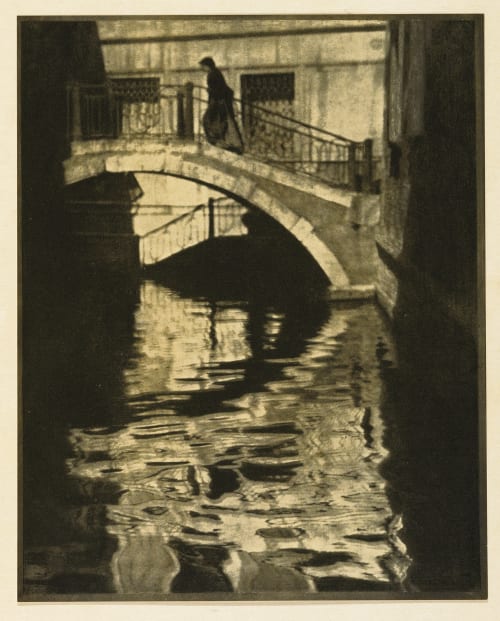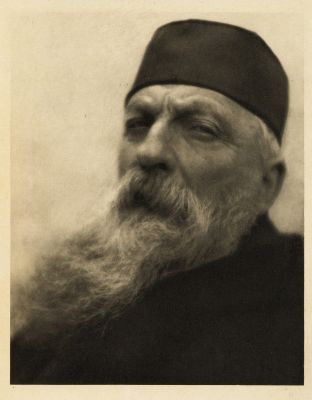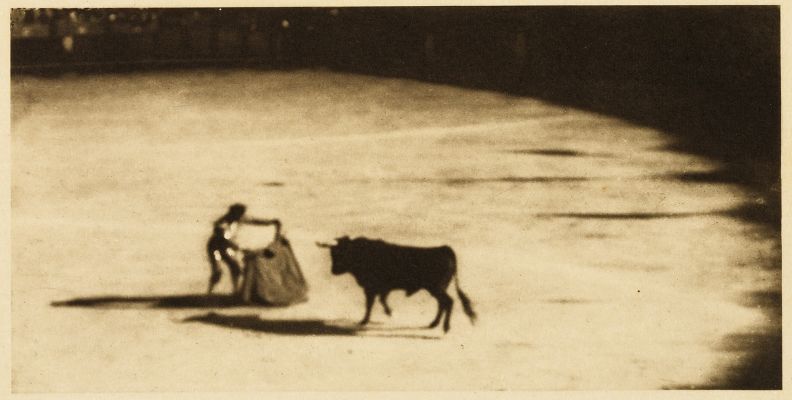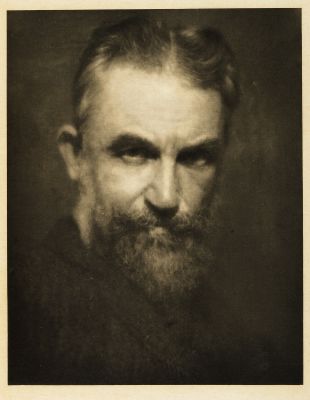
Title
The Bridge, VeniceArtist
Coburn, Alvin Langdon (American, 1882-1966)Key FigurePublication
Camera Work XXIDate
1908Process
HalftoneAtelier
J.J. Waddington, LondonImage Size
20.8 x 16.5 cm
Can you imagine a more perfect way of studying and permanently recording the subtle play of sunlight on moving water? I have spent hours on the canals of Venice, and in the waterways of other places, feasting my eyes on the rhythmic beauty and the poetry of liquid surfaces, hours punctuated at intervals of exceptional charm by the click of the shutter. They have been rare days, and full of great joy – for whatever the camera may not do, it certainly does this one thing: it teaches you to look at the world about you. – A.L. Coburn [1]
By 1900 young American painters like Winslow Homer and John Singer Sargent had evolved a particularly American variety of impressionism, and it was natural that young American photographers should look to this style of painting for inspiration. In The Bridge-Venice Coburn adopts a typically impressionist pictorial device of shifting attention away from the natural subject, the picturesque bridge and striding figure, and directing it to the play of light on the water. To enhance the effect, Coburn played with the registration of the halftone printing stages in order to increase the intricacy of the pattern reflected in the canal. This is evident when comparing the letterpress halftone print with the negative and with the gum-platinum print of the same image.
The Bridge, Venice is, like Edward Steichen’s great The Pond—Moonlight, a daringly abstract image for its time. The reflections in the canal abstract—rather than mirror—the figurative elements of the composition. The principle subject—the shadowed figure ascending a Venetian bridge—plays a secondary role to the fascinating reinterpretation of the scene on the water’s rippled surface. Although Coburn is justly classified as a Pictorialist during this phase of his career, he never relied upon the formulae or sentiment that ultimately limited the creative lifespan of this style.
Stieglitz had debuted the 22-year-old Coburn’s images in Camera Work in 1904, reproducing six of his photographs and hailing him as Possibly the youngest star in our firmament. Gifted with both an artist’s eye and a deep understanding of photographic technique, Coburn always represented a wholly independent vantage point in the world of early 20 th century photography. [2]
Reproduced / Exhibited
Alison Gernsheim, and Helmut Gernsheim. Alvin Langdon Coburn, Photographer: an Autobiography: Edited by Halmut & Alison Gernsheim. London: Faber, 1966. no. 35.
Coburn, Alvin L, Helmut Gernsheim, and Alison Gernsheim. Alvin Langdon Coburn: Photographer : an Autobiography. New York: Dover Publications, 1978. no. 3
Doty, Robert M. Photo-secession: Photography As a Fine Art. N.Y: Eastman, 1960. plate XVI.
Naef, Weston J. The Collection of Alfred Stieglitz: Fifty Pioneers of Modern Photography. New York: Viking Press, 1978. no 140 (titled The White Bridge – Venice).
References
[1] A.L. Coburn (Pall Mall Magazine, 1913, p. 19)
[2] The Metropolitan Museum of Art Bulletin Spring 1978










